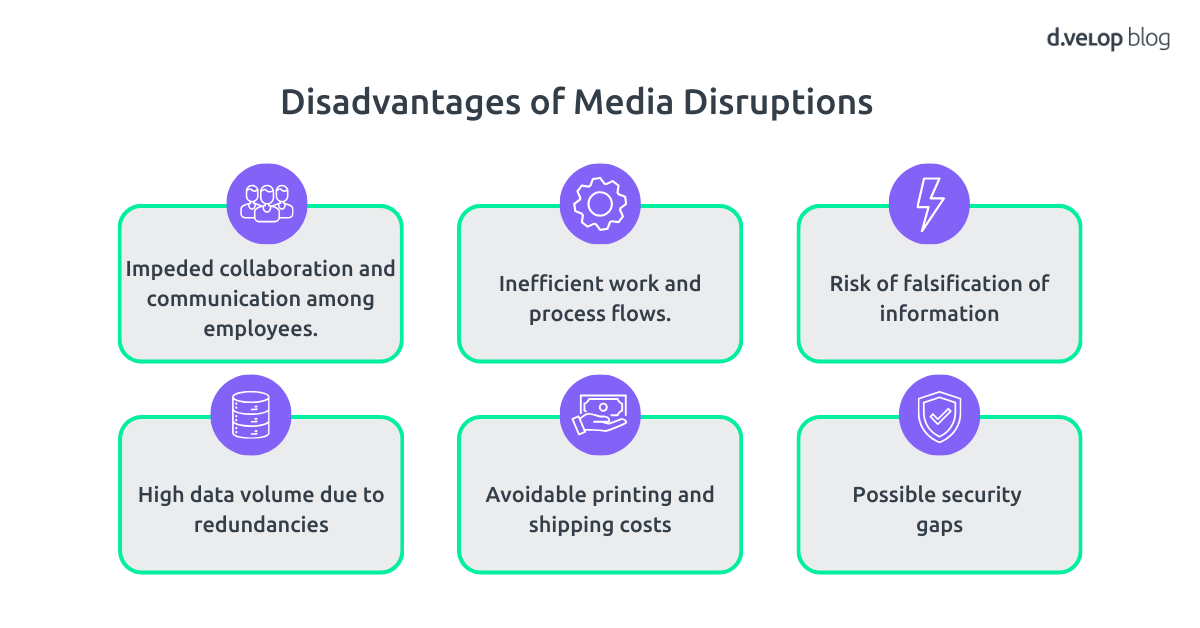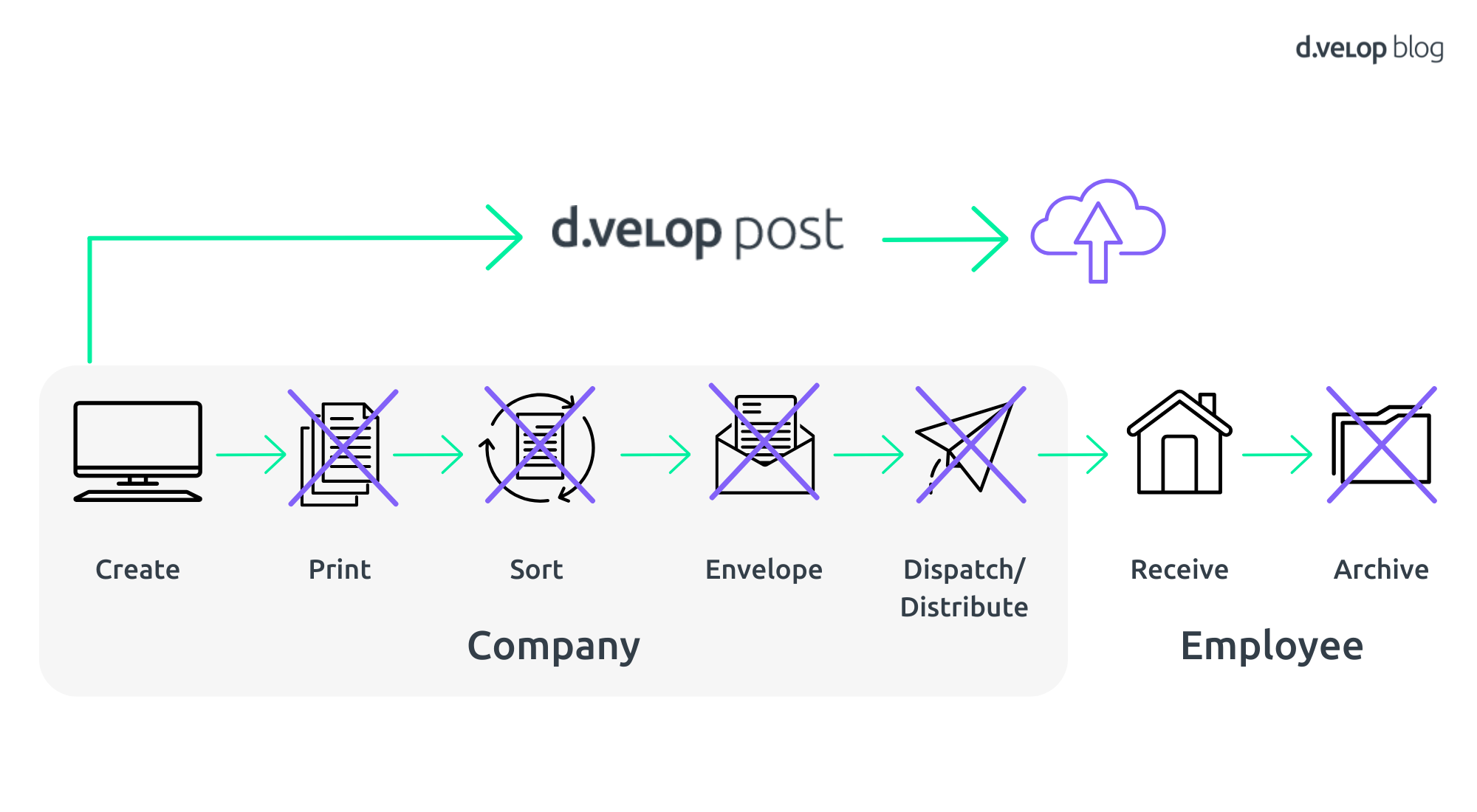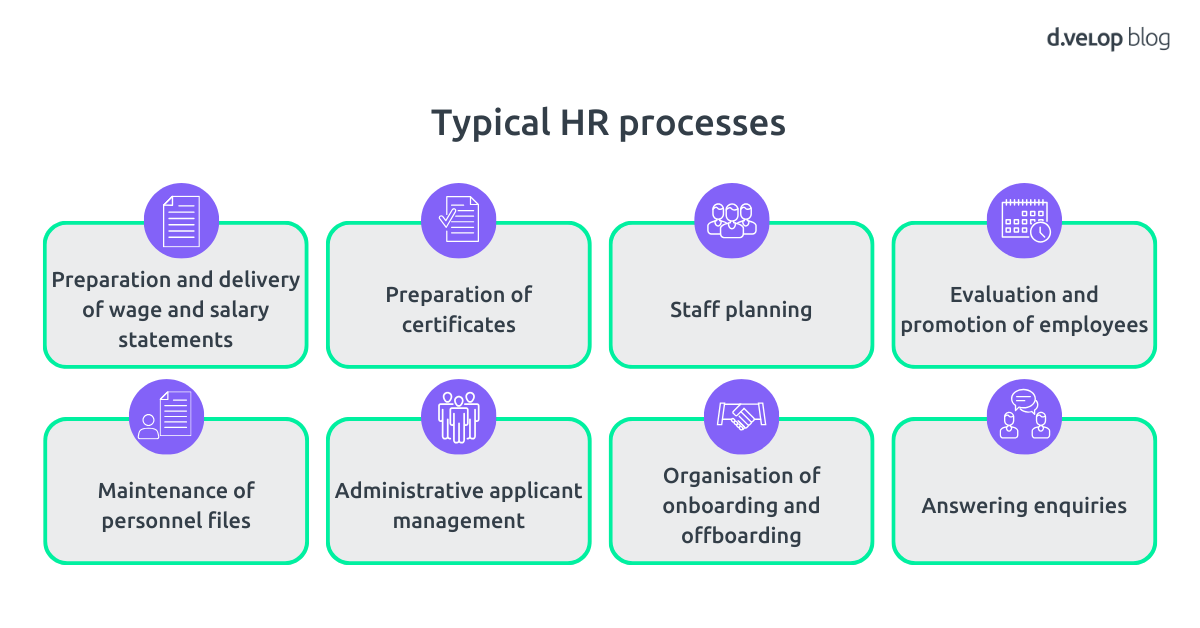In many organisations, HR departments are confronted with administrative processes that are time-consuming and resource-intensive. Do you sometimes feel that your HR processes are anything but efficient? That they feel like they’re from the 90s, which no one understands any more but no one wants to touch because they somehow still work? The endless battle against repetitive, monotonous tasks that leave no room for creativity is a reality many of us face. One of these routine tasks that regularly recurs and causes enormous effort is the manual dispatch of payrolls – a time-consuming cost driver that returns month after month and is familiar to everyone. Spoiler alert: It doesn’t have to be this way. Relief can be provided here, as employee processes can be easily optimised.
The big questions here are simple: Why should you optimise HR processes? How can the dispatch of payrolls in your organisation be fully digitised and automated? What other HR processes, besides the dispatch of payrolls, can be simplified and accelerated through digitalisation? You’ll find out in this blog article.
Why Should You Optimise HR Processes?
Increase Productivity
We all know it: A request comes via email, the next one through the internal ticket system, then by phone or personally from colleagues on-site in the office. Even employee-related documents find their way to HR in various ways: via internal mail, email, post, or personally. In three-quarters (77%) of German companies, even the fax is still in use! These different ways of passing on information often lead to a lack of order, which hampers productivity. A productivity study from the UK has proven the following: Employees spend an average of more than 45 minutes a day (which, extrapolated to a work week, means about 3.75 hours or almost half a workday) switching between different applications. From the email inbox to the time tracking app to the internal messenger platform to the project management tool. Then back to the email because they forgot why they left it in the first place – and then need additional time to get back into a somewhat productive workflow.
What is needed are digital tools that not only promise to automate and simplify routine tasks, but actually do so without becoming another digital burden themselves.
After payroll comes payroll! A structured payroll process is essential for the smooth payment of wages and salaries. Our employees are our greatest asset and should be paid punctually and reliably.
Monika Hartz, Payroll Specialist d.velop AG
Avoid Media Breaks
One of the most common media breaks in HR processes is the break between the digital creation of payrolls and their analogue distribution.
A state-of-the-art payroll system generates the payrolls in fractions of a second, saves them as PDFs, and stores them. And then something completely irrational happens: These digitally created documents are printed, assembled, enveloped, and then either distributed by hand or sent by post. And there it is again: the classic media break between digital creation and physical distribution. An efficiency loss that consumes time and generates costs that are simply no longer justified in today’s digital world.
In the worst case, some processes are even legally insecure. A classic example: payrolls that are still distributed via internal mail. And then? The employee is on holiday, the mail ends up in the wrong slot, a curious hand accidentally grabs the wrong envelope. Not a malicious data breach, but a system error – caused by an unnecessary media break that could have long been avoided.

Challenge of Accessibility
An often underestimated problem caused by the classic distribution of payrolls: retirees and other (former) employees outside the company are difficult to reach via analogue means. Instead, you rely on cumbersome requests that cost time and resources. Wouldn’t it be better if there was a digital system that not only optimises processes but also supports modern working methods? A product through which all recipients can securely access the documents anytime and anywhere – mobile, efficient, and without the detour through outdated structures?
Outdated HR processes are not only efficiency breaks in the HR department – they are also avoidable cost drivers in your organisation. They don’t sneak in as a sudden system crash, but act like a constant drop of a hot stone: inconspicuous but enormously damaging in the long run. The more hurdles a process has, the greater the friction losses – time evaporates, costs rise, processes become unnecessarily complicated. And that’s exactly why they should be optimised.
How Can the Dispatch of Payrolls in Your Organisation Be Fully Digitised and Automated?
The hurdle is not the technology. It already exists. It is tried and tested and it works. In the first step, you need software that enables digital mail delivery and seamlessly integrates with existing systems – without complicated workarounds. This is made possible by the d.velop postbox.
Technical Requirements
The question about the technical requirements for digital delivery with d.velop postbox? Simple: There are none. Or rather, almost none. No extensive installations are needed. The IT department does not have to struggle with servers, databases, and annoying updates for several months to get the system up and running. The only requirement is the installation of the virtual printer driver – and this takes about five minutes.
What really sets d.velop postbox apart is its compatibility. The ability to seamlessly integrate with existing payroll systems like SAP, LOGA, DATEV, SAGE, or Microsoft Dynamics or DMS like d.velop documents.
I was very impressed with how easy the implementation was. We had the technical challenge of delivering payrolls directly from SAP. Together with d.velop, we were able to flawlessly realize the dispatch from SAP.
Julia Frank-Rössle, Global Lead in Digital Collaboration
GEKA GmbH
How Digital Mail Delivery Works
And this is how simple it is to send digital payrolls to your employees. Instead of a physical letter, employees now receive a digital document securely stored in their personal postboxes. This postbox – and this is crucial – belongs to them, not the organisation, but the employees. Here, all relevant documents are stored and sorted, available around the clock, everywhere, anytime, regardless of device or operating system.

This brings you the following advantages: Because the postboxes belong to the employees, they are responsible for maintaining their master data. After leaving the company, the d.velop postbox remains in their possession, so no resending of documents is necessary – they simply stay where they have always been. And if a resending is ever necessary, it also happens in the existing postbox, which is convenient for you because you don’t have to worry about anything.
5 Advantages of Digital Payroll
- Increased efficiency thanks to automated, paperless processes.
- Cost savings, as expenses for printing, postage, enveloping, and shipping are eliminated.
- Time savings for HR administrators, as there is no need to manage paper documents. The documents can be easily and quickly shared with relevant stakeholders (via app or PC).
- Highest security standards for the entire delivery and beyond, for example through transport and storage encryption and a German data centre.
- Hybrid mail – delivery of payrolls digitally and, if desired, by post to “non-digital” recipients. Save time and costs with digital payroll delivery.
Digital delivery of salary statements and payslips 📫
Other HR Processes That Can Be Optimised Through Digitisation
HR specialists also have to handle various administrative and managerial tasks that can be optimised.
The most common include:
- Onboarding
- Job postings and application management
- Employee data management
- Time tracking and absence management
- Performance evaluation

Thanks to d.velop process studio, these HR processes can also be optimised.
- Onboarding: Digitise the onboarding process by managing checklists, welcome packages, and training programmes centrally in one system.
- Job postings and application management: Automate and manage the creation and publication of job postings, as well as the collection and processing of applications.
- Employee data management: Store and update employee data digitally to have access to current information at any time.
- Time tracking and absence management: Automate the recording of working hours and absences to ensure accurate and efficient management.
- Performance evaluation: Plan and document performance reviews digitally to enable continuous tracking and improvement.
Goodbye, monotonous tasks. Welcome, efficient workflows!
The Digital Signature: Legally Secure, Sustainable, and Fast Signing
In many HR departments, signature processes are still traditionally done with pen and paper. Documents to be signed are printed out, signed, and then scanned again to be sent digitally or stored in the system. Why not save several steps and use a digital signature? Thanks to the use of a digital signature – for example, for applications, certificates, onboarding documents, data protection declarations, etc. – time and cost efforts are minimised. HR managers can thus send all documents that require a signature to employees for signing, regardless of location and time, whether in the office on a PC or on the go on a smartphone. Additionally, documents delivered via the d.velop postbox can be signed digitally. This way, HR departments create a holistic workflow for employees and optimise their HR processes.
Why d.velop sign for HR Administration
- Software made in Germany
- Intuitive and mobile use
- eIDAS and GDPR-compliant
- Numerous integration options
- All signature levels, including QES available as standard
- Personal support from our own team
- Comprehensive onboarding
Optimising HR Processes Pays Off
Even minimal digital interventions in HR processes have disproportionately large effects. Routine tasks such as sending payrolls or maintaining data are almost self-managing, saving costs and working time. Employees benefit from faster access to convenient digital tools. Optimising HR processes is important because younger employees, in particular, expect efficient HR processes and evaluate companies based on whether they are up-to-date or end up as digital fossils.
For HR departments, this means: Now or never. “Digital Workplace” and “Workplace of the Future” are no longer buzzwords.
